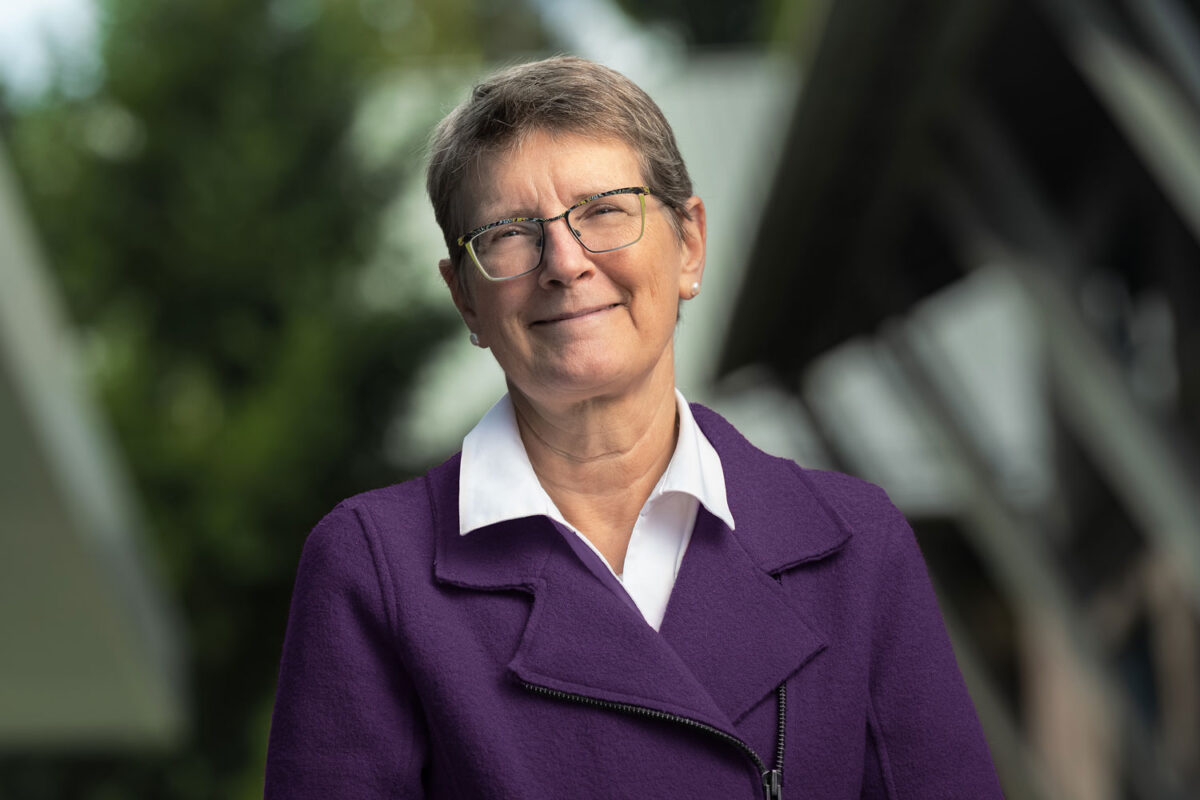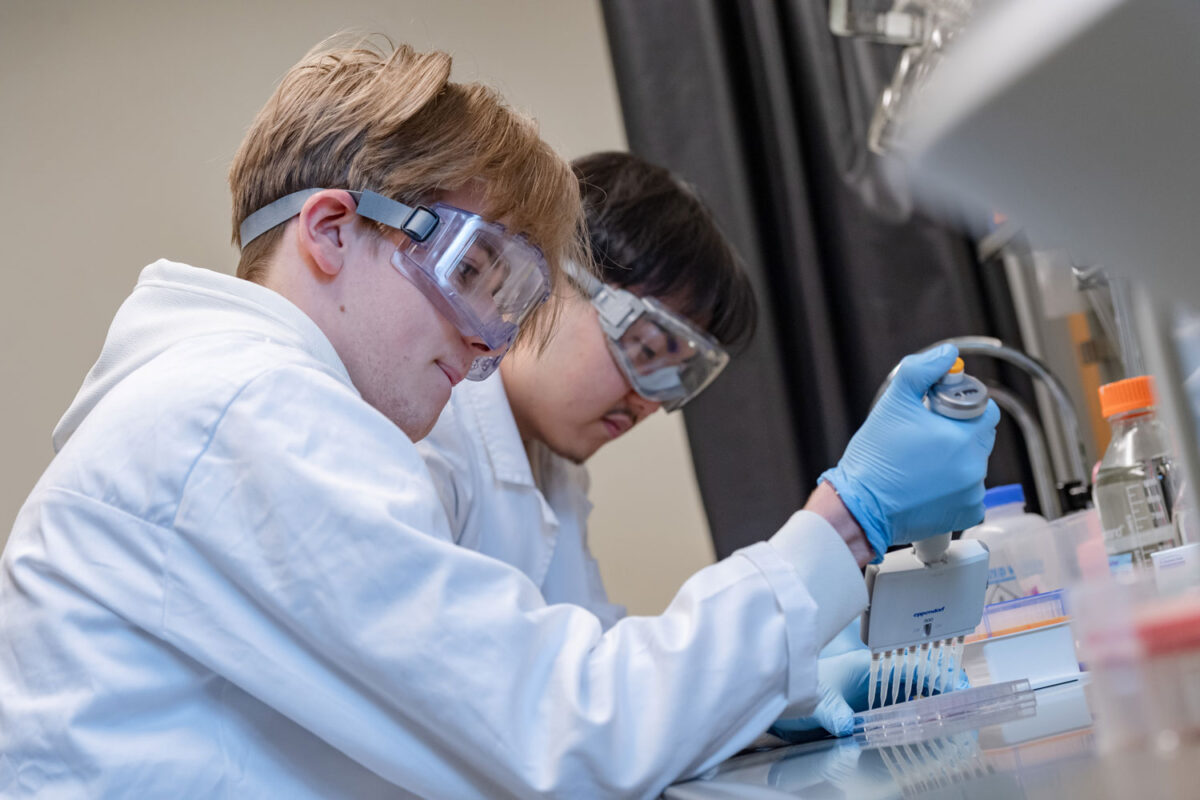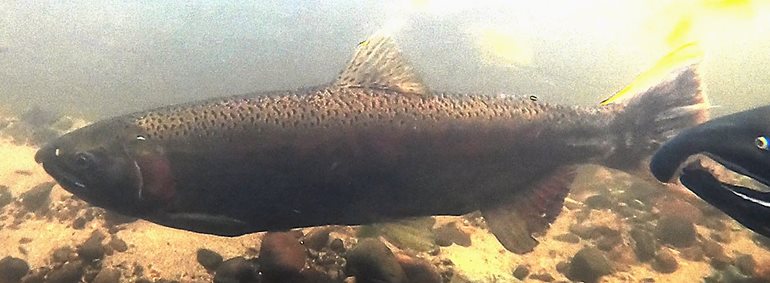
By Douglas Esser
A volunteer looking for salmon in Little Bear Creek in Jeff Jensen’s Salmon Watchers program reported a “National Geographic moment.” Not only did she see salmon returning to spawn near Woodinville, Washington, she witnessed hungry otters at high speed, chasing them up and down the stream.
In addition to reporting salmon to the University of Washington Bothell teaching professor, the watcher’s comments revealed how citizen science can be fun, even exciting.
“It’s wonderful to see how much enthusiasm there is out there in the community for doing this,” Jensen said. “I think people are really hungry to engage with some of these environmental problems in a tangible way.”
Community project
Salmon Watchers is Jensen’s revival of the King County Salmon Watchers program that ended in 2015. This fall, with help from the city of Bothell and in collaboration with the Three Rivers Chapter of Trout Unlimited, Jensen recruited citizens to gather vital information about salmon in streams that flow into Lake Washington and the Sammamish River.
About three dozen people signed up, agreeing to watch a stream for at least half an hour per week — taking coronavirus precautions. They file reports online about any chinook, sockeye, kokanee and coho they see. They’re watching 11 streams, from Bear Creek near Redmond downstream to Thornton Creek in north Seattle, plus May Creek in Renton.
The program started in September and could continue into December, but stream watching becomes more challenging when the days are shorter and the water is higher. “If you’re not seeing anything, it’s hard duty to be out there in the rain on some November morning,” Jensen said.
Trout Unlimited manages the volunteers, who sign liability waivers. Other nonprofits supporting the project include the Lake Forest Park Stewardship Foundation and OneBothell. Jensen trains the watchers how to identify different species, manages the data and exchanges information and observations with the participants.
School of STEM students in Jensen’s Salmon and Society course this autumn quarter may also get involved with a class project, interacting with the watchers or improving the training and educational materials.
Pre-spawning mortality
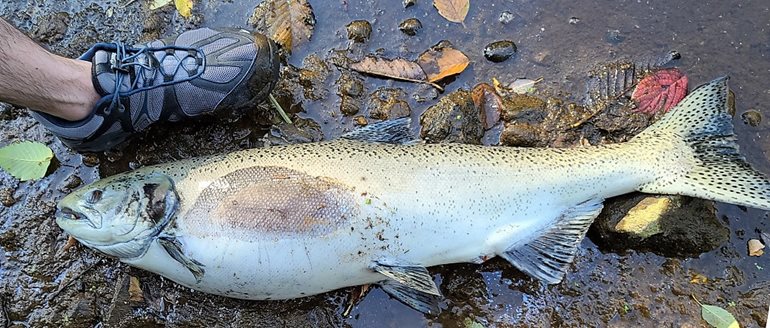
Unfortunately, the first reported salmon sighting on Sept. 7 in Little Bear Creek near Woodinville was a female chinook that died before spawning.
Chinook are endangered species in Lake Washington and Lake Sammamish, Jensen said, and pre-spawning mortality is a major concern in urban streams.
Chinook that come in early often run into unfavorable temperatures, said Jensen, who monitors readings in North Creek, which flows through the campus wetlands. As of Sept. 21, the water temperature was about 60 degrees; 57 or 56 would have been better.
A class from Cascadia College, co-located on campus with UW Bothell, found two dead chinook in the wetlands. Jensen found a third, a jack, which is a male that shortens its time at sea and returns small.
Jensen is sharing all these findings with state biologists. “That information about possible environmental stress on chinook is useful.”
Behind the bowling alley
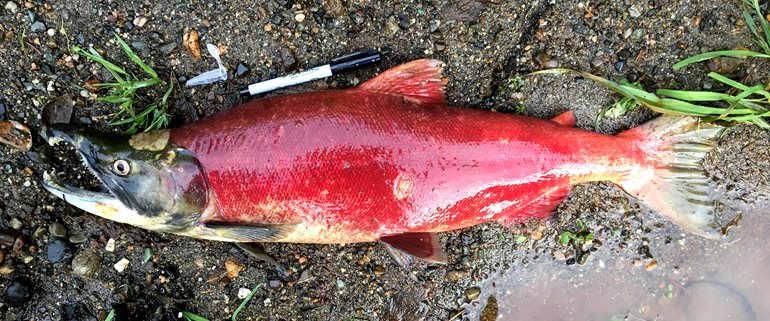
One of the people who has been watching local streams for a long time is Jensen himself. He grew up in the area and now lives in Lake Forest Park. He remembers, after bowling at Kenmore Lanes as a child, seeing lots of sockeye and kokanee in Swamp Creek.
“I used to stand behind the bowling alley and look at the fish, but I haven’t seen sockeye in there for a long time,” he said. “Now, having a systematic effort at viewing streams regularly will give us a bigger picture of where salmon have disappeared and which streams actually have something coming back.”
Although the study is not designed to estimate total returning fish numbers, the salmon watchers are gathering valuable information of interest to scientists.
“Even not seeing any fish is data and can provide useful information for restoration purposes,” Jensen told the volunteers.
Otter poop, too
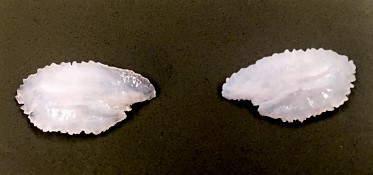
About those otters: Cute as they may be, they are greedy consumers of salmon, Jensen said. A family of otters can pull a salmon on a log and tear it apart so fast there’s suddenly nothing left.
“They’re really voracious,” he said. “One of my concerns is that otters eat a lot of salmon, and it’s hard to know how much.”
Last year, a lot of small fish, such as kokanee, came into streams and got cleared out by otters, he said. “This year we had reports of otters chasing chinook, so they’re willing to take on the larger fish as well.”
To get some preliminary information on how much otters rely on salmon in their diet, Jensen asked salmon watchers to report the animal waste or scat. Examination reveals what otters have been eating.
Otoliths, hard mineral structures from the fish’s inner ear, can pass intact through the otter digestive system. They can reveal information about the numbers, species, size and even migratory history of the fish.
Useful information
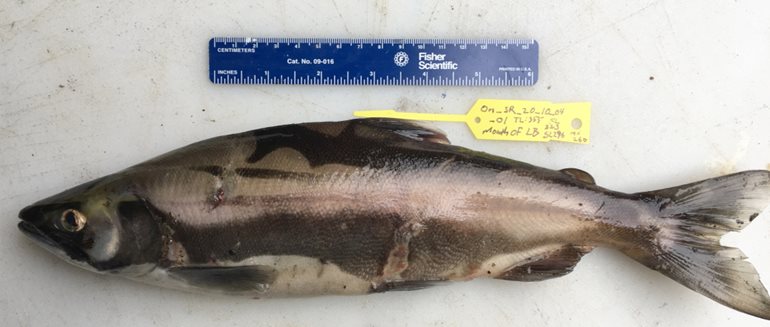
Jensen already has a good idea what this year’s spawning runs are like. All ocean-going salmon are counted as they return through the Ballard Locks in Seattle. It’s a decent year for chinook and a terrible year for sockeye, he said.
Fish that don’t get counted at the locks are kokanee, a sockeye-like fish that does not migrate to the ocean. They are an area of research for Jensen, who is working to restore runs of the once-plentiful “little red fish” in Lake Washington.
“I’m hoping we see kokanee running up after the sockeye. That suggests there’s some kind of self-sustaining lake population of kokanee,” Jensen said. “We don’t know if that’s true or not, but I’d love to see a lot of those in November and December.”
In addition to information about otters and otoliths, Jensen shares data about fish tags and answers other questions on the project’s website. So much of salmon restoration is getting the public knowledgeable and involved, he said.
Part of citizen science
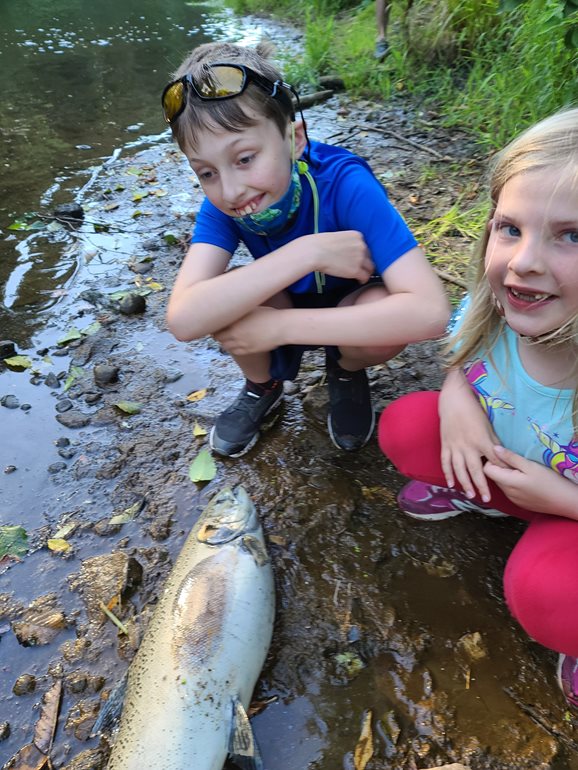
Liz Warfield and her children, Julian and Eleanor, are watchers on Little Bear Creek near Woodinville. In fact, they were the ones who found that first dead female chinook. A week later when they returned, they saw its decomposing carcass.
“While it is gross, it is also amazing,” Warfield said. “My daughter kept gagging and saying, ‘this is amazing <gag> but gross <gag> oh wow! Look at that <burp> yuck … Science is cool!’”
It was sad thinking of the chinook’s life story, Warfield said. It started a remarkable journey in Little Bear Creek and went out to the ocean through the Sammamish River, Lake Washington and Puget Sound. It made the same long journey home, evading orcas, seals and sea lions, only to die just short of passing on her genes.
Warfield and her husband are both educators at the UW in Seattle who value cultivating their children’s curiosity. They learned about Jensen’s program through the Shoreline Area News blog. Julian, a fifth-grader who is obsessed with fish, was surprised that a kid like him could make a meaningful contribution to science and help protect animals he loves, Warfield said.
“Saving the salmon will help save lots of animals, like orcas. We can keep track of how many salmon there are. We can tell fishermen how many fish it is safe to catch, and it will help keep other animals safe too!” Julian said.
Life in an ecosystem
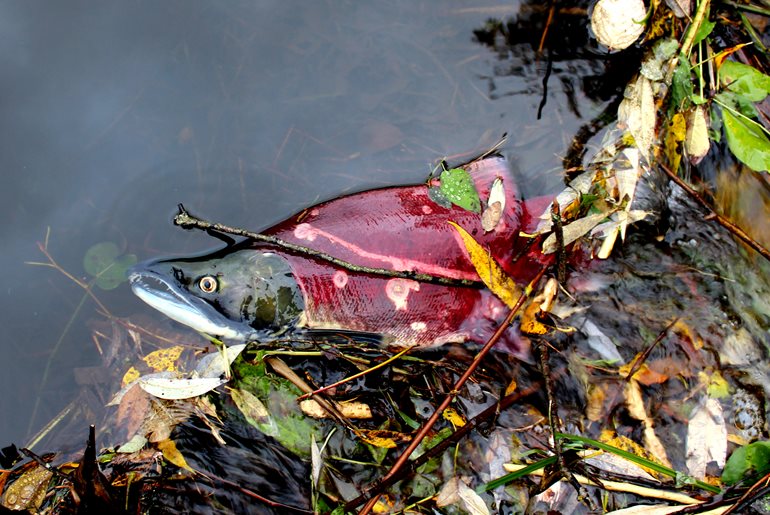
Watching for salmon in neighborhood streams reminds people they are part of an ecosystem they impact with their daily lives.
Terry Trimingham had been a watcher in the county’s Salmon Watchers program for 10 years and was glad to resume the activity. She gives Jensen another set of eyes on North Creek, after exercising regularly at the Northshore YMCA.
The experience also reminds her of National Geographic. Seeing a salmon in a local stream is like being inside the magazine, she said. Popular Science might be another analogy.
“If people are curious I can tell them about the different kinds of salmon and their life cycle, or I share about how human activities affect the stream and how that affects the fish,” Trimingham said. “I believe that the more we know about this amazing resource the better stewards we can be.”


